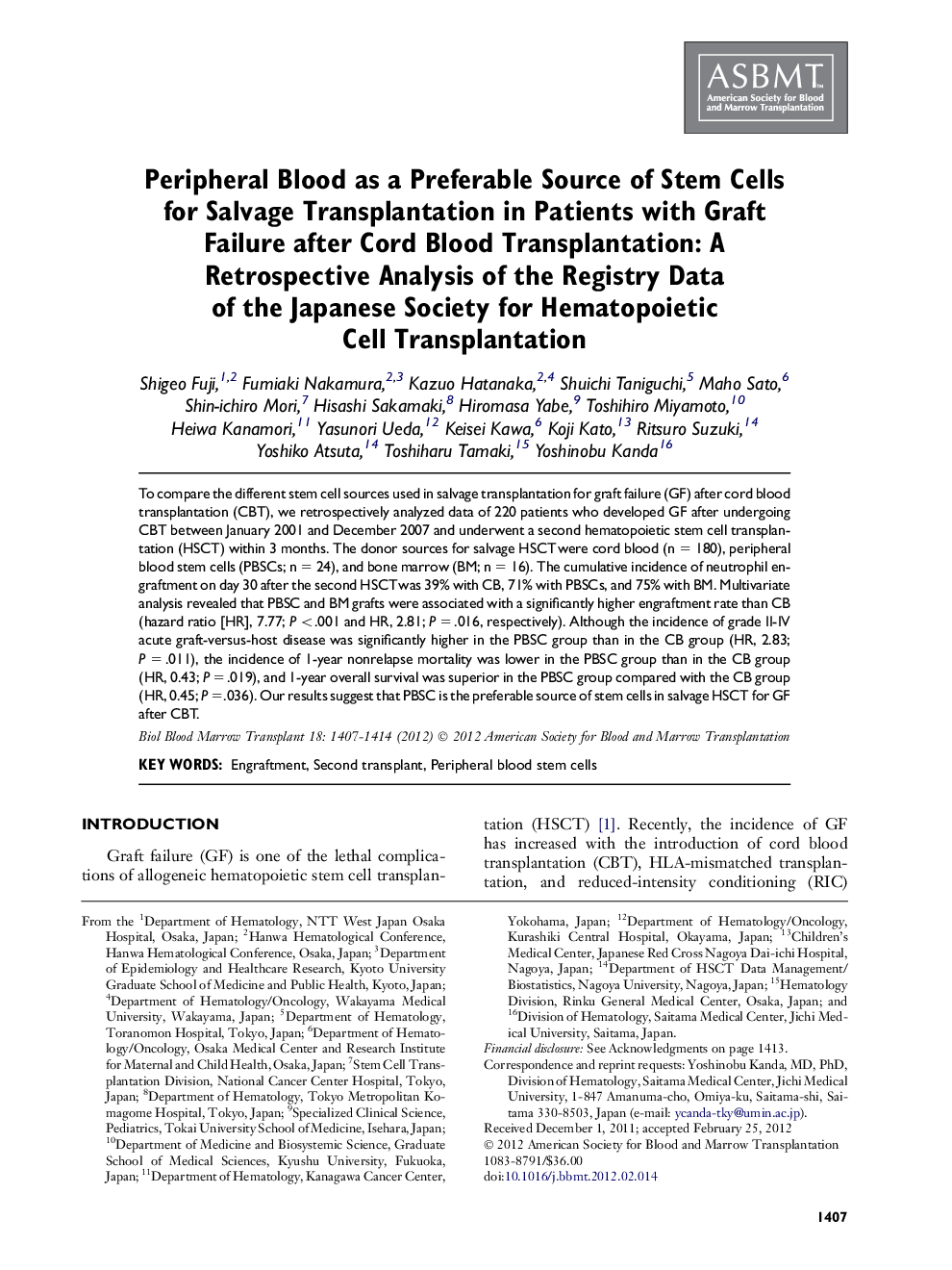| Article ID | Journal | Published Year | Pages | File Type |
|---|---|---|---|---|
| 2102640 | Biology of Blood and Marrow Transplantation | 2012 | 8 Pages |
To compare the different stem cell sources used in salvage transplantation for graft failure (GF) after cord blood transplantation (CBT), we retrospectively analyzed data of 220 patients who developed GF after undergoing CBT between January 2001 and December 2007 and underwent a second hematopoietic stem cell transplantation (HSCT) within 3 months. The donor sources for salvage HSCT were cord blood (n = 180), peripheral blood stem cells (PBSCs; n = 24), and bone marrow (BM; n = 16). The cumulative incidence of neutrophil engraftment on day 30 after the second HSCT was 39% with CB, 71% with PBSCs, and 75% with BM. Multivariate analysis revealed that PBSC and BM grafts were associated with a significantly higher engraftment rate than CB (hazard ratio [HR], 7.77; P < .001 and HR, 2.81; P = .016, respectively). Although the incidence of grade II-IV acute graft-versus-host disease was significantly higher in the PBSC group than in the CB group (HR, 2.83; P = .011), the incidence of 1-year nonrelapse mortality was lower in the PBSC group than in the CB group (HR, 0.43; P = .019), and 1-year overall survival was superior in the PBSC group compared with the CB group (HR, 0.45; P = .036). Our results suggest that PBSC is the preferable source of stem cells in salvage HSCT for GF after CBT.
